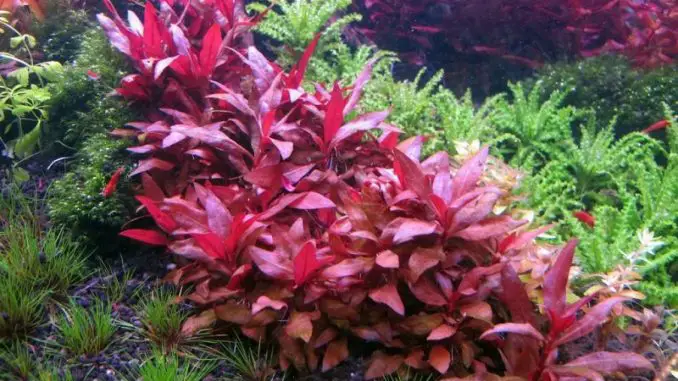
The name Telanthera Cardinalis might trip you up because there are so many different names for closely related plants. Telanthera Cardinalis’ full scientific name is Alternanthera reineckii, which includes two types, the Cardinalis and the Rosaefolia.
These two types are very similar, but the Cardinalis has wide leaves and the coloration is deep red, and the Rosaefolia’s leaves are longer and thinner and have lighter pinkish-red coloration. Additionally, there are even mini-plants, too.
I have often seen Telanthera Cardinalis referred to as Alternanthera Cardinalis, and they are sometimes listed under these other alternate names:
- Achyranthes Reineckii
- Alternanthera Osiris
- Alternanthera Reineckii
- Telanthera Osiris
I’d say that due to the myriad of names if you are trying to order one, look at the picture to see what you’ll be getting.
If you collect cuttings from the side shoots and stem tips, they are easy to propagate. This stem plant grows quite strongly and is easily propagated by cuttings of stem tips and side shoots.
The plants are great for creating the Dutch-style “plant street,” a form of aquascaping that focuses on simplicity through a balance of plant color, density, and variety.
In this article, I’ll discuss everything you need to know about growing and maintaining these beautiful aquatic plants. We’ll also discuss the distinctions in appearance among the different types of these plants. By the end of this article, you’ll know whether Telanthera Cardinalis is the right plant for your
home aquarium.
TABLE OF CONTENTS
Telanthera Cardinalis Facts & Overview
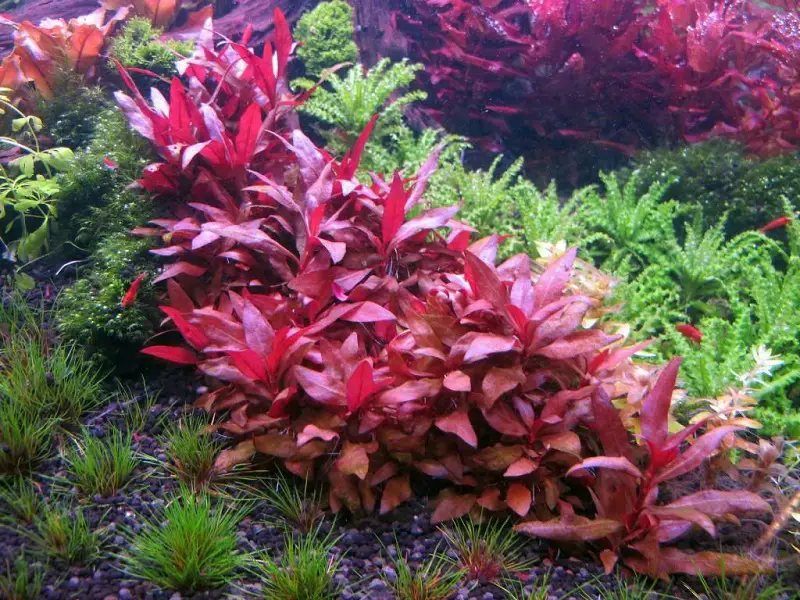
| Category | Rating |
| Care Level: | Easy to Moderate |
| Temperature: | 75°-80.6° F (23.9°-27° C) |
| Color Form: | Green and red |
| Propagation: | 1 year |
| Size: | 10-20 inches L & 4-6 inches W, pH 6.5-7.5 |
| Family: | Amaranthaceae |
| Minimum Tank Size: | 10 gallons |
| Placement: | Middle and background |
| Lighting: | Moderate to high |
Telanthera cardinalis, or Alternanthera reineckii, comes from the Amaranth family. You might recognize “alter” in the name and discern that it means “to change” (actually, the Latin word is alternans.)
This is a big family with nearly 200 different species around the globe. Telanthera cardinalis is endemic to South America, particularly the southern part of Brazil and Paraguay. Due to its native marshy habitat, it is called a paludal plant.
It can grow both as a malarial (or emergent) plant, meaning that it is rooted under the water and then emerges over the water surface, or fully emersed, meaning that it is capable of surviving fully underwater. Certainly, the latter comes in handy when you are planting a home aquarium. But if you are
planning a paludarium, the malarial quality is a must. Either way, the versatility can be appreciated.
In the wild, you will see Telanthera cardinalis growing in fields that are flooded, with their tops hovering over the water. In your home tank, they will grow to about 16 inches (40.6 cm), and in the wild, they can grow even taller, up to 24 inches (60 cm). The red hues on the leaves add great contrast to the green plants in your tank.
Typical Behavior/Features
If planted underwater, the Telanthera cardinalis stems will grow vertically, and rather quickly emerge from under the water, popping their stems up above the waterline. You’ll see this behavior in the wild, in a paludarium, or in an aquarium that is not filled to the top.
Why do the Telanthera cardinalis behave this way? It is preparation for adaptation to ground growing. If you clip the shoots and submerge them again, they will shed the leaves.
One feature of the dwarf version of Alternanthera reineckii, called the Mini, is that the parent plant produces many shoots, and exhibits carpet growth along the aquarium substrate. If you get the dwarf version, you should consider this as you curate the aquascape.
As an ornamental plant, Alternanthera reineckii plays a big role in the appearance and ambiance of your tank, but it has useful features for your other aquarium inhabitants. Telanthera Cardinalis is a great source of oxygenation and provides hiding places for fry to protect them from predators.
It should be noted that these plants have weaker root systems. If they come out of the substrate, just push them back down and cover them with more of the substrate. I recommend that you allow the cutting to float in the water until the roots are more developed, and then you can plant them in the substrate.
Appearance
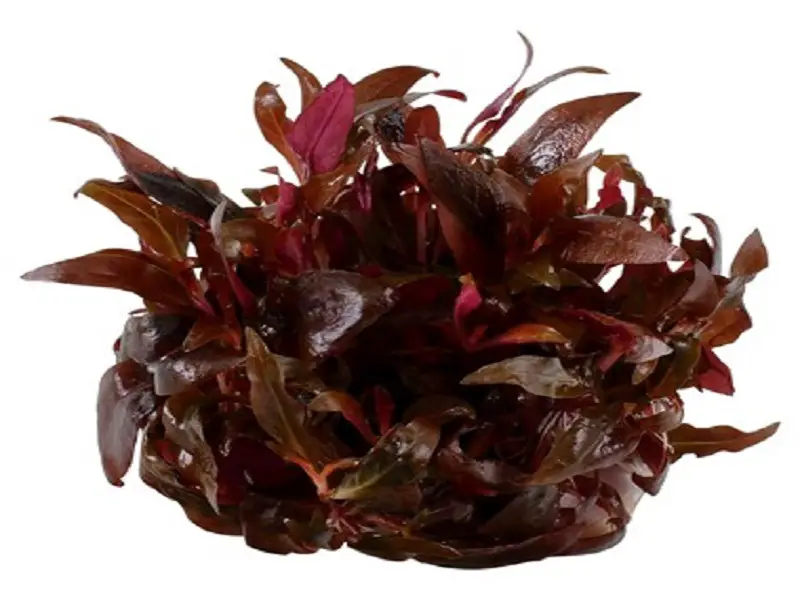
The leaves of Telanthera Cardinalis are oval and perpendicular to each other, a pattern known as decussate. The deep red hue is located on the bottom leaf surface, while the green hue is located on the top of the leaf. However, the color does vary based on where the leaves are. Leaves that are closer to
the surface are more reddish, while leaves closer to the bottom exhibit more green.
This plant is interesting in that the leaves are without stalks; they are approximately an inch (2.5-3.5 cm) long and .2-.6 inches (.5-1.5 cm) wide.
If you are floating the clippings, you will notice that Telanthera Cardinalis’ roots are fibrous, long, and thin.
Variations
Alternanthera reineckii rosaefolia have pink veins and a pinkish or purplish hue underneath rather than the deep red.
The dwarf variation, Alternanthera reineckii Mini, is also purple and pink and grows in a carpet pattern.
Habitat and Tank Conditions
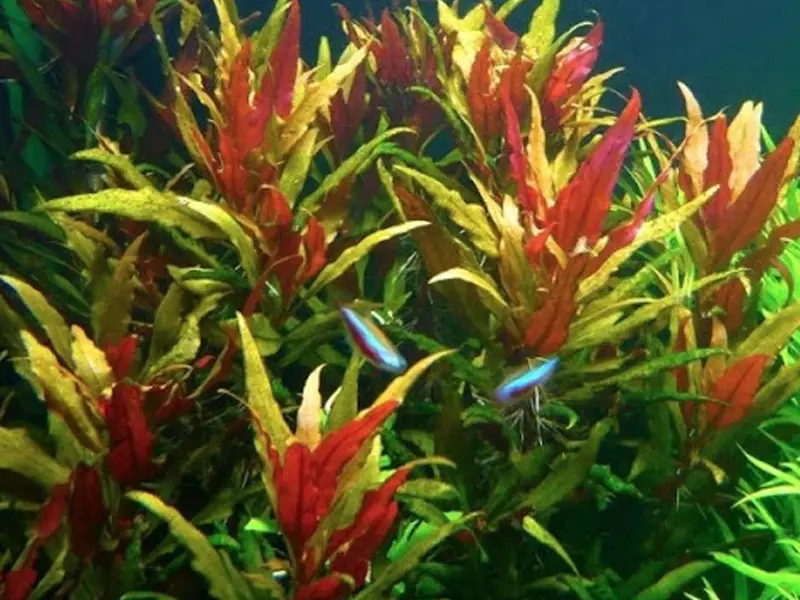
Beginning with the substrate, Alternanthera reineckii should get about .75 inches (2 cm) of sand, mud, or gravel. They will get most of their nutrition from the water, not the substrate, so sand or gravel will do fine.
You should plant Telanthera Cardinalis in the background or midground of the tank; it’s a fairly fragile plant that can break easily, so be gentle when planting it in the substrate.
I mentioned before that the leaves of Telanthera Cardinalis will fall off when they are submersed because they are not needed. Therefore, when you see them emerging from the surface, you can clip them and float them or plant them, allowing the plant to have a bushy appearance.
Lighting is one of the key requirements for the successful growth of Alternanthera reineckii. Moderate to bright light will ensure proper growth rate and produce the best coloration and appearance. You could use a lamp if you don’t have a lot of natural sunlight, but direct sunlight is best if you have access.
If you’re using artificial light, watch the timing and placement, as the shoots can burn under direct artificial light.
Water Conditions
The most important water condition for Telanthera Cardinalis is freshness. Because it gets the bulk of its nutrients from the water, you will need to do partial water changes every other week to keep the water fresh.
You can add water fertilizer tablets and CO2 injections are also recommended. As for temperature, they do best in a tropical tank, similar to the conditions in their natural habitat in South America.
The optimal parameters to ensure the best quality of life for Telanthera Cardinalis:
- pH levels: at least 6.5-7.5
- Water temperature: 75° – 80.6° F (23.9° – 27° C)
- KH: 2-12 °
What Size Aquarium Do They Need?
Telanthera Cardinalis is suitable for both smaller and larger tanks. As curator of your aquarium, you will be the one to prune the plant according to the needs of your tank.
Planting and Growing
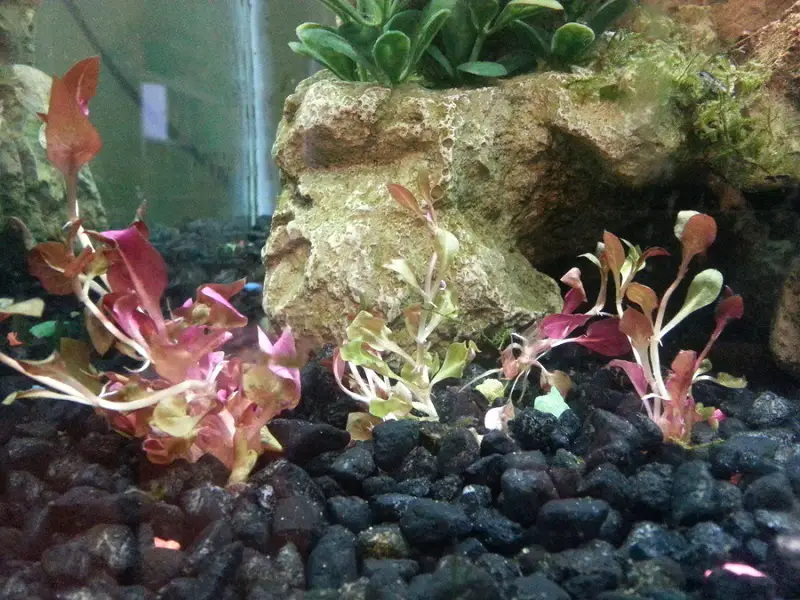
The way Alternanthera reineckii grows will depend in large part on how you care for it. If you have a smaller tank, it will not grow as much in height.
If you’re interested in the intense deep red color of Telanthera Cardinalis, make sure to use intense light and keep the temperature on the lower end of my recommended parameters.
Planting Telanthera Cardinalis in bunches will create a leafy appearance, although be mindful not to crowd these plants too close together: they need about 4 inches (10 cm) of breathing room between themselves and the neighboring plant. This distance will ensure that the bottom leaves have access to sufficient light.
When you are pruning, nip the top buds and float them in the water. When they develop roots, plant them in the substrate next to the parent plant. This replanting will create more side shoots, and the plant will have a bushier appearance.
Care
Making sure your Telanthera Cardinalis has enough minerals and nutrition is crucial for successful, thriving plants. In addition to moderate to intense light, I recommend CO2 infusions or injections, and fertilizer. Alternanthera reineckii needs iron and potassium. They also need nitrogenous matter, which
they’ll get from the waste from your fish.
Otherwise, you just want to make sure you are pruning and replanting regularly.
Is Telanthera Cardinalis Suitable for your Aquarium?
Telanthera Cardinalis is a great choice for a home aquarium. As long as you have the proper lighting, it is a fairly easy plant to care for. And the red color is a nice contrast to other greenery in your tank. As you’re planning your aquascape, you can have fun with the placement of colors.
You could even get a couple of different varieties of Alternanthera reineckii and play around with the shapes, sizes, and colors.
Remember that these plants should be planted in the midground or background, and should be pruned as needed. It’s easy to plant the clippings or even let them float.
I think you’re really going to like the way these red beauties look in your aquarium.
What does your Telanthera Cardinalis look like? I’d love to hear about which type of plant you have.
Share some details in the comments below!

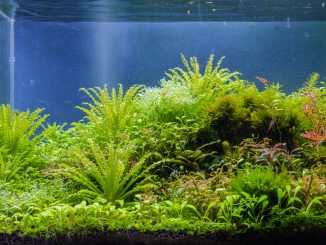

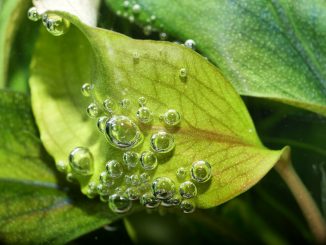
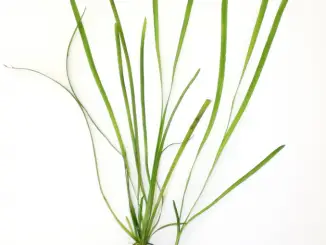
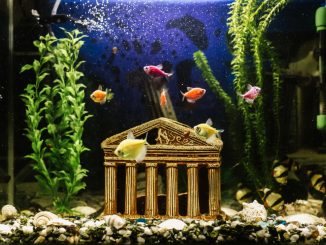
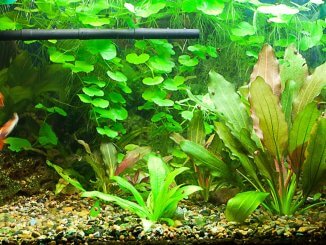
Be the first to comment